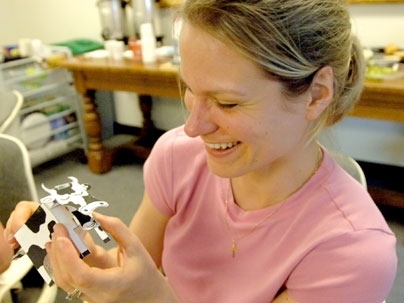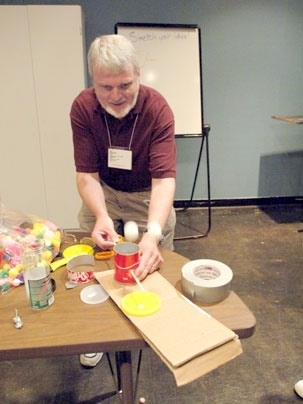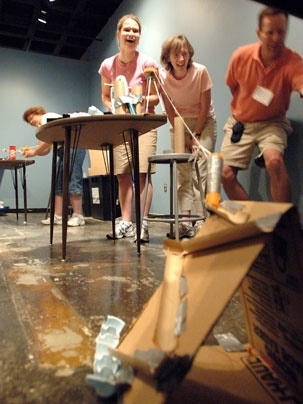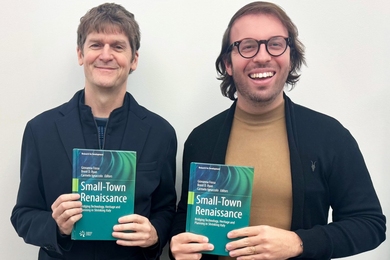Dozens of educators from area elementary and middle schools are getting up close and personal with cutting-edge research at MIT -- while learning how to make science more accessible to youngsters.����
With some multicolored marshmallows, pushpins and pipe cleaners, a teacher can bring home genetic concepts of inheritance, for example. Using these simple materials, teachers can build model creatures, called "Reebops," and then help children build plausible genetic offspring.
"I will definitely use that one in my classes," said Diane McDonough, an eighth-grade science teacher from Foxboro. "Anything that uses food, they will love."
The teachers are at the MIT Museum -- and several other local museums, including the Franklin Park Zoo, the New England Aquarium and the Boston Children's Museum -- earning professional development points and graduate credit as part of the Boston-based Museum Institute for Teaching Science (MITS), an annual summer program that takes place in different museum locations all over Massachusetts. The program runs from July 10-21 this year.
MITS is designed to promote hands-on approaches to science, technology, engineering and mathematics.
Each year, the theme changes, so many teachers come back year after year. This year's theme is "Cycles, Systems and Inquiry." At MIT, the teachers practiced activities in genetics, mechanical engineering and computer science.
The MIT Museum has been participating in the program for several years, but there was a difference this year, said Beryl Rosenthal, director of Exhibitions and Public Programs at the MIT Museum (and the person responsible for the MIT Museum's involvement with MITS).��
"This has been our most successful year in terms of incorporating MIT researchers," Rosenthal said. "We wanted to make sure the teachers got something here they could not get anywhere else -- talking with researchers in their labs and engaging with cutting-edge research."
To that end, the teachers met with researchers and professors from several departments, including the Computer Science and Artificial Intelligence Laboratory, the Center for Environmental Health Sciences (CEHS), the Department of Brain and Cognitive Sciences, and the Whitehead and Broad Institutes.
"This year we really wanted to give the teachers access to the real gold at MIT," Rosenthal said.��
The rigorous daily schedule keeps teachers busy from 8:30 a.m. to 3:30 p.m., touring laboratories and exhibits, watching presentations and participating in cross-curriculum projects they can take back to school in the fall.
On the first day, teachers built the Reebops and worked with Lego DNA kits, designed by a researcher in CEHS and prototyped at the museum.
On the second day, the teachers built paper cows. The project incorporated mechanical engineering concepts (particularly around systems), mathematics and even English, according to a couple of teachers who said they planned to ask their students to write essays about the cows.��
"I will modify it a bit for younger students," said Mary Jeannotte, a fifth-grade teacher from Foxboro.
McDonough said she liked the MITS projects because they get students out of their textbooks. "These are actual items they can take home with them. I am sure they will remember these kinds of activities the rest of their lives," she said.��
This is the second year McDonough has attended MITS; the first was in 2004. "I am so sad I could not come out last year," she said. "I am overwhelmed by all that I have learned."
Although the Reebops and cows can be made for little money, some of the projects explored in MITS require more expensive technology. Therefore, the program also shows teachers how they might locate funding and other resources, Rosenthal said. "We really wanted to give them both the materials and the inspiration," she said.��
"We see teachers who come back year after year," Rosenthal said.
For more information, visit www.mits.org.








